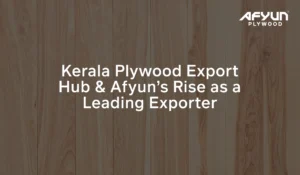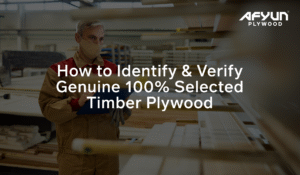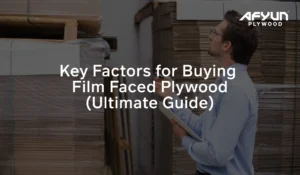Blockboards are a popular choice in the construction and furniture industries due to their durability, versatility, and cost-effectiveness.
Despite their widespread use, there are still many misconceptions and questions surrounding blockboards.
This blog aims to answer six of the most frequently asked questions about blockboards. This will provide clarity for those considering using this material for their next project.
- What is a Blockboard?
Blockboard is a type of engineered wood that is commonly used in the construction and furniture industries. It consists of a core made up of softwood strips placed edge-to-edge and sandwiched between two layers of hardwood veneer.
The strips are glued together under high pressure to form a solid panel. The end product is a lightweight but sturdy board that can resist bending and warping. This makes it ideal for long panels such as doors, tables, shelves, and partition walls.
- How Does Blockboard Differ from Plywood?
While both blockboard and plywood are types of engineered wood, they differ significantly in their composition and properties.
Manufacturers make Plywood by glueing together thin layers (or ‘plies’) of wood veneer.
The blockboard is composed of a core of softwood strips sandwiched between two outer layers of hardwood veneer.
This difference in structure results in different characteristics.
- Blockboards are lighter and more resistant to bending and warping compared to plywood. They are also better for applications requiring long panels.
- Plywood tends to be stronger and more resistant to moisture, making it a better choice for outdoor use or in areas with high humidity.
- Is Blockboard Suitable for Outdoor Use?
While blockboard has many desirable properties, we do not recommend it for outdoor use. The softwood strips used in the core of the blockboard are susceptible to moisture and can swell or rot if exposed to water over prolonged periods.
However, if the blockboard has a water-resistant seal, you can use it outdoors for short periods. For outdoor projects, materials like marine plywood are usually a better choice due to their superior moisture resistance.
- Can I Paint or Varnish Blockboards?
Yes, blockboard can be painted or varnished to enhance its appearance and durability.
Before applying paint or varnish, it’s important to prepare the surface by sanding it smooth and applying a primer.
This will help the paint or varnish adhere better and result in a smoother, more professional finish.
It’s also possible to apply a laminate or veneer to the surface of the blockboard to give it a more decorative appearance.
- What Are the Advantages of Using a Blockboard?
Blockboards offer several advantages.
- They are lightweight.
- They are also very strong and resistant to warping and bending, which makes them ideal for use in long panels such as doors or tabletops.
- They are also less expensive than many other types of engineered wood, making them a cost-effective choice for many applications.
However, they are not as moisture-resistant as other types of engineered wood, which limits their use in outdoor applications or areas with high humidity.
- Are Blockboards Costlier Than Plywood?
Blockboards and plywood are both popular choices for construction and furniture making, but their prices can vary based on the type and quality.
Generally, the cost of blockboards is comparable to that of plywood, but certain types of plywood can be more expensive.
The plywood price in India can range widely depending on the type, size, and brand. For example, the Calibrated plywood price tends to be higher due to its precise thickness and uniformity.
Similarly, Marine Plywood price is usually higher because of its enhanced water resistance, making it suitable for use in damp and humid conditions.
Conclusion
Understanding the properties, uses, advantages, and disadvantages of a blockboard can help you make an informed decision about whether it’s the right material for your project. While it may not be suitable for every application, blockboard offers a combination of strength, versatility, and affordability that makes it a popular choice in many situations. As with any material, the key to success with blockboard is understanding its characteristics and using it appropriately for your specific needs.
You May Also Like:
Plywood Price | Plywood Price in India | Calibrated Plywood Price | Gurjan Plywood Price | Fire Retardant Plywood Price | Waterproof Plywood Price | Marine Plywood Price








